Why the Golf Swing is the “Heart” of Your Game
When I began the game of golf, one thing became immediately apparent: the golf swing is at the heart of the game. It is the centre of everything. Whether you’re a pro golfer or a beginner, a great, reliable swing can be the difference between a good round and a poor one.
In this post, I’ll go over everything you need to know to get control of your golf swing, starting with the fundamentals of grip and posture and mixing in some of the more advanced elements of shot shaping. The key takeaway? Get your swing right, and the rest of your game will fall into place. Better swing = better ball control = more distance = lower scores. And, let’s face it: playing the game is way more fun when you’re hitting it well!
It takes away so much of the drama that golf inflicts on us — the constant weighing of how good or bad we are between one swing and the next. It can seem like when everything is singing together, the game suddenly works. Let’s get into it so you can learn the secrets to becoming a better player and levelling up your own game.
What Is a Golf Swing?
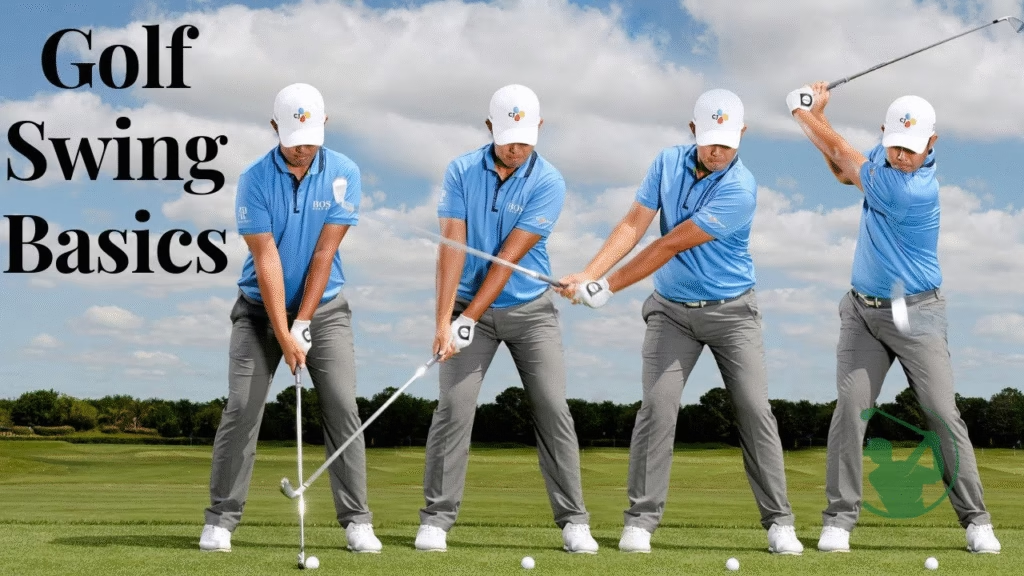
So , just what is a golf swing anyway? It’s all about more than hitting that ball — it’s a flowing, controlled movement that delivers both power and precision. A good meaty swing isn’t about brute force but technique and timing. It’s a scene as fluid as possible from start to finish, allowing you to come into the ball cleanly every time.
It feels effortless, like it’s almost just happening, like the swing is progressing rhythmically from one phase into the next. It begins in the setup and concludes in the finish, but every single phase in between — backswing, downswing, impact — should come together and make sense. In a nutshell, the swing is both an art and a science. And as soon as I got the hang of it, it all seemed to come together.
The 5 Key Phases of a Golf Swing
Address/Setup
For me, getting set up correctly is key to a good swing. That’s everything from how I hold the club, where I position myself, and where I set up to the ball. My position keeps me strong between the paddles, and my hold offers me this possession. I’ve learned that minor tweaks in setup can significantly affect how well I shoot.
Backswing
On the backswing, I think of coiling for power. The concept should be to load up and prepare to go to the downswing. I try not to hurry through this part—a good backswing is crucial to creating power and consistency.
Transition
This is the part where the magic takes place. I transition from my backswing to the downswing, and I’ve found that the better that transition is, the better the shot. It’s also a matter of timing: Depending on where I release the club, that can be a difference maker for my swing.
Downswing
As Great As I Can Be, I try to remain relaxed and not force power when I begin my downswing. This is where everything from the backswing is released into the ball.
Impact & Follow-through
Hitting the ball perfectly at contact is what counts the most. After that, the follow-through ensures I stay balanced and finish strong. I always end with a good, balanced, solid finish.
The Fundamentals of a Perfect Golf Swing
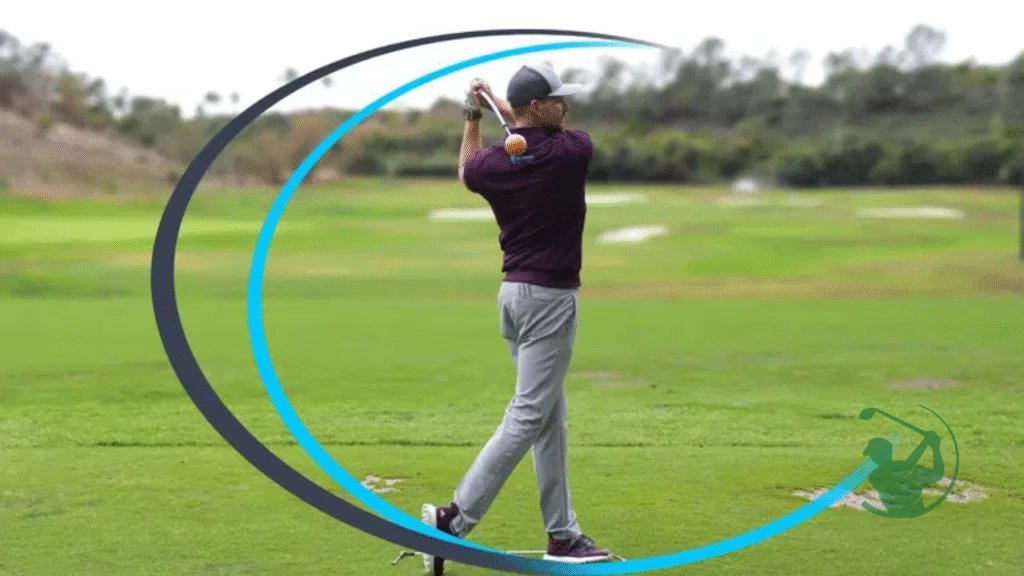
To me, having the basic elements down is the basis for any good golf swing. First, I focus on my grip. A good hold provides me with the power to control the club, which allows me to focus my swing on the ball precisely.
Next, posture. I’ve discovered that I’m just fine if I stand up properly with a little spine angle in my swing. When my posture is off, I’ve had too many mishaps, so I focus on staying aligned and balanced throughout the shot.
Another key aspect is tempo. I’ve also discovered that I hit better shots when I am in trouble — such as in a difficult lie or in the rough — if I swing smoothly and rhythmically. But it’s about timing as much as it is strength. If I swing too hard, I lose control. Balance and weight transfer also are so important — putting my weight in the right places helps me to hit the ball harder. And although keeping my eye on the ball (and beyond) has become second nature. The harder I concentrate on the ball and follow through, the better shots I continue to make.
Common Golf Swing Mistakes (and How to Fix Them)
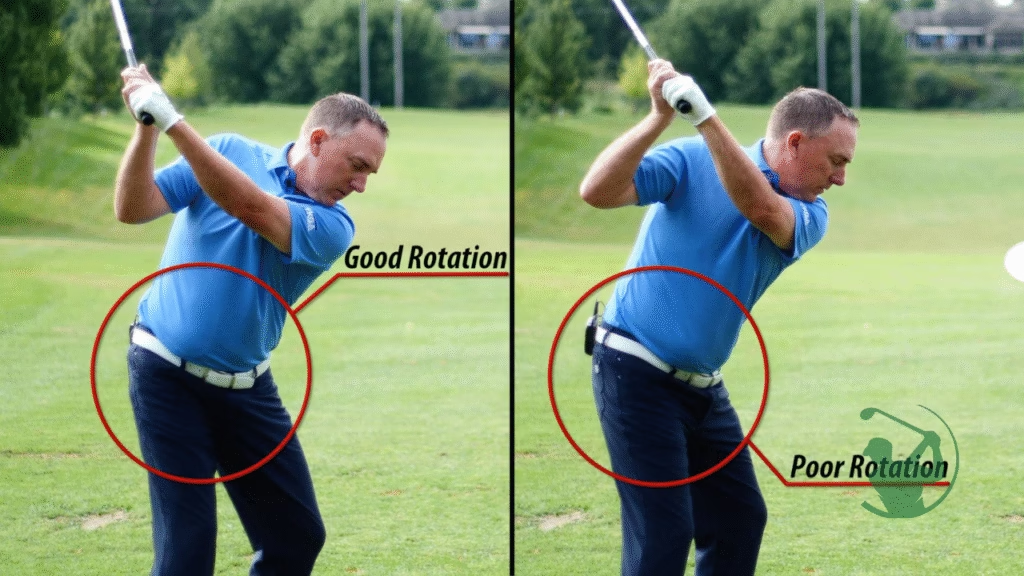
I’ve made many mistakes over the years but learned to fix them. The one problem I had was to slice the ball. There was a time when I couldn’t fix it, no matter how hard I tried. However, I improved significantly when I paid more attention to my grip and rotated correctly.
In addition, I was topping the ball. It was annoying, but nine times out of 10, I hit the ball better if I concentrated on standing up and finishing.
Another issue I had to contend with was the premature release. If I let the ball go too soon, I’d lose power and accuracy. So now, I work on remaining patient on the downswing and releasing the club appropriately.
It was a problem for me as well with the balance thing. I realized that I can’t swing smoothly or powerfully if unbalanced. So, now I am working on a weight transfer.
And then there is over-swinging. Whenever I attempted to swing the bat too hard, my mechanics quickly went to pot. I have since learned to remain loose and let the club do the work.”
How to Build a Consistent Golf Swing
What has worked has been consistency. One of them was figuring out a pre-shot routine for myself. I’m less likely to overthink or rush a shot when I have a routine.” My routine keeps me extra calm and laser-focused.
Building a swing: There have also been swing drills that have helped potion every year, Except I’ve been able to practice, practice, and practice drills that force muscle memory deep into the grey matter, improving my swing without even thinking about it.
I’ve discovered that I can work on things in slow motion to get the feel of the swing’s mechanics. This means I can concentrate on each stage without being in a hurry. The ability to record my swing has also been crucial. I watch videos of my swing to see what I need to fix.
Drills to Improve Your Golf Swing

Here are some practical drills that I have personally found helpful in refining my swing:
The Towel Drill
This one helps me work on swing path and clubface control. I position a towel between my armpits and squeeze as I pull back. If it crashes, I need to work more on linking my arms and body.
Swing Plane Trainer Drill
This drill keeps me on the plane and trains my body to stay on the right path, both in the backswing and downswing.
One-Arm Swing Drill
I love working on this drill to work on my hand-eye coordination and to have a better feeling of my swing. I swung with one arm, so I would have to rely on my core for stability and control.
Step-through Drill
This drill is teaching me proper weight transfer. I swing and then step through with my lead foot. Since using this drill, my balance has improved, and my power has improved.
How Your Equipment Impacts Your Swing
It has taken me many years to realize how important my golf equipment is in determining how I swing the club. When I first began, I never paid much attention to my clubs, but I now know the right equipment can be a game changer.
So, for example, getting properly fitted clubs has made a tremendous difference in my swing. I got a club fitting where the shaft length was adjusted, and the grip size was correct. It felt like the very first time I had swung a club. I’ve seen more control and consistency since then.
Shaft flex came into focus, of course, which I’m also more enlightened about. I had been playing stiff shafts, even though I don’t swing most clubs fast. When I went to a shaft with slightly less stiffness, I moved more comfortably and had way more ball speed.
Having the right ball for my swing style has also made a difference. I used to golf with whatever ball was lying around, but my shots became much more consistent when I tried a ball made for my swing speed and feel.
So don’t pass up the details when it comes to equipment. The right clubs, shafts, and balls can help you find your swing and play your best.
Golf Swing Tips for Beginners
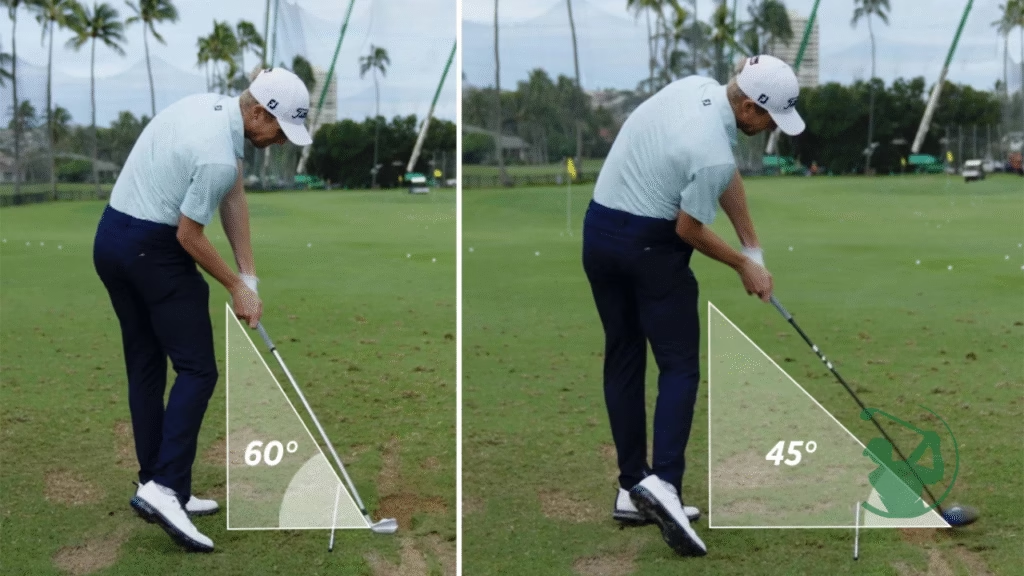
As a beginner, I made some common mistakes, but looking back, I realized that focusing on fundamentals was the way to go. If you’re brand new, here are some simple recommendations I wish I had known earlier.
Focus on Fundamentals
I cannot emphasize this enough: don’t worry about clever techniques. Just work on the basics—grip, posture, and alignment. These basics will build everything else in your swing.
Be Patient with Yourself
I wanted to be great at golf that day, but it’s a process. Progress doesn’t happen overnight, so don’t be discouraged when you make mistakes. Each round is a lesson in humility, and each swing is a chance at redemption.
Build a Strong Foundation
Begin at the beginning and advance step by step. Once those are moving the way you want, you can bring your focus back to the finer points of your swing. But before anything else, you need to have the basics down.
Advanced Golf Swing Techniques
After I got the hang of the basics, I began to play with more advanced swing concepts, which is when the light bulb turned on for me. Here are some strategies that I have found beneficial in levelling up my game:
How to shape your shots (Draws and Fades)
At first, I thought whacking a straight ball was the objective, but I soon learned that the ability to shape my shots — hitting draws and fades — gave me more options on the golf course. I hit a draw by concentrating on closing the clubface at impact and a fade by barely leaving the face slightly open.
Adjusting Trajectory
There is more to a golf shot than distance alone. Learning how to control ball flight, making it higher or lower, has allowed me to adapt to course conditions. To hit it lower, I try to swing a bit more compactly or to hit it higher, I focus on a longer follow-through.
Controlling Spin
I have to have control over the spin on the ball, especially when I hit my approach shots. I work on trying to control my clubface angle for how much I produce spin with a shot. This will enable me to stop the ball quick on the green.
How Fitness and Flexibility Affect Your Golf Swing
I never used to think about fitness as related to my golf game, but I’ve set it up now so that I realize my physical health will have a significant effect on my swing. My physical fitness and flexibility contribute to my ability to whip my body around—something that was important for me in generating power and accuracy.
Core Strength Importance
Having a strong core has been one of the biggest things that has helped with my swings. It supports me during the shots and makes it easier to transfer forces.
Rotational Flexibility Exercises
Even and especially concerning the body, strength is nothing without flexibility. I’ve also been doing flexibility drills to support my rotation. I can make a full, free swing, not only with my shoulder, hips, and torso but also with a short movement with the lower half, which is essential.
Golf Training Workouts
I have also begun integrating golf-focused exercises into my daily workout routine. They strengthen the muscles I use the most when swinging, improving my swing and lessening my chance of injury.
Mental Approach to a Great Golf Swing
The psychological aspect of golf is as important as the physical aspect. Over the years, I’ve found that keeping calm and staying confident is key to hitting a good shot.
Staying Relaxed and Confident
It can be tempting to get frustrated, but I’ve learned that the more relaxed and confident I am, the looser and more controlled my swing typically is. I concentrate on treating others (and myself) how I want to be treated and remaining positive, even while plans may fall apart.
Visualizing Your Swing
When I shoot, I always have a vision of the shot. I don’t know what I will do, but this mental movie primes me to concentrate and make sure I deliver the shot with purpose. I’m amazed at the difference it makes if I imagine my swing before hitting the ball.
Overcoming Fear of Mistakes
Golf is a game of error, and I’ve learned not to be afraid. Each shot is a chance to always start again, and I don’t spend much time thinking about the negative.
Working with a Golf Coach: Is It Worth It?
I’ve been lucky enough to have a few different golf coaches over the years, and I can tell you this: It’s worth the investment. Another set of eyes can catch elements of your swing that you can’t detect.
Professional Swing Analysis Advantages
A coach directs a lot of personalized feedback my way — I find out exactly what I need to work on. They may also provide me with recommended exercises or guidance based on my unique needs.
What to Expect in a Lesson
When I take a lesson, I want to work on one or two identifiable parts of my swing. My coach frequently has baskets of balls at his disposal so he can video our swing, study it, and make some corrections. That feedback has made me much better over the years.
When to Seek Help
I suggest seeing a coach if you’ve hit a stalemate in your game. Working with a coach can be invaluable if you’re unsure of the source of your difficulties or are looking to fast-track your progress.
Best Golf Swing Resources
As much as I try hitting the pavement, I’ve found that just as many resources can accelerate my improvement when I’m not on the course. When I’m on the road or at home, I’m guaranteed to find something that will help me shave strokes. Through the years, I’ve stumbled across a handful of gems I would recommend to anyone striving to get better.
YouTube Channels
I watch a lot of golf tutorials on YouTube. My Golf and Golf Academy are two of my favourite channels. They provide fantastic instruction on all of the basics, from grip to targeting tips to advanced stuff like shaping shots. The best part is that I can rewatch the videos when I need a refresher.
Books and Courses
I have found books to be a fantastic means of learning more about the golf swing theory. One book that drastically changed my point of view is The Golfing Machine by Homer Kelley. It made me feel the mechanics of the swing so much more. There are also plenty of online courses I have signed up for that will break everything down into small, digestible steps for me to pick up at my own pace.
Swing Training Aids
Although I am a huge proponent of taking swings on the course play, I use swing training aids to assist me in dialling in certain parts of my game. The Orange Whip is one of my favourite training aids for balance and rhythm. Another helpful tool I’ve used is the Tour Striker Smart Ball, which can aid body rotation and hand-eye coordination.
Conclusion: “Swing into Success”
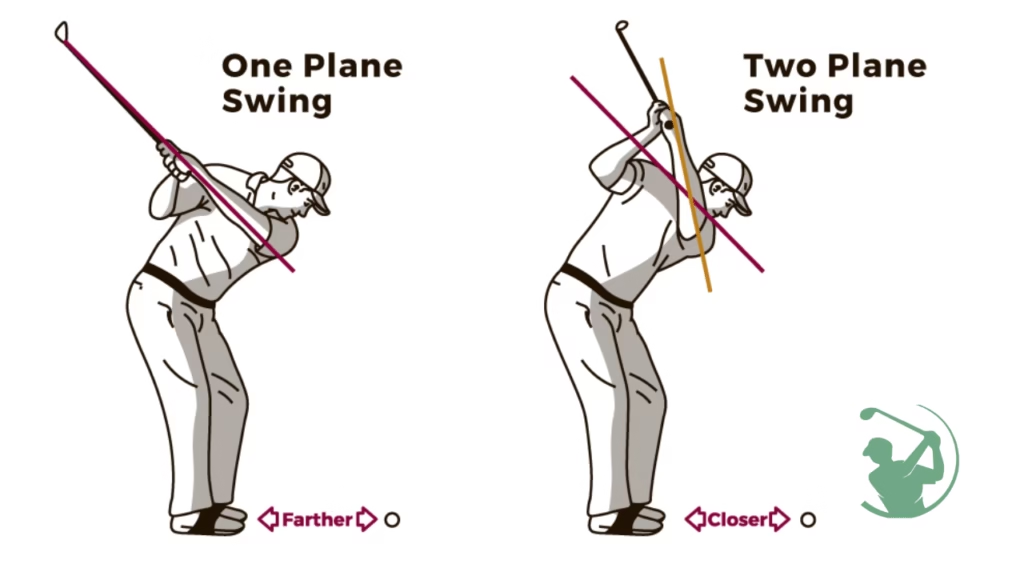
From personal experience, nothing I’ve discovered about the golf swing is easy, but the key is consistency and concentration, both in practice and learning about the swing. It isn’t just about whaling on the ball; it’s about creating a swing that feels like a natural extension of your body, like water flowing out of an open faucet.
Whether you’re a newbie or in the process of levelling up as a writer, I hope this guide has provided you with some worthwhile nuggets of advice and actionable tips you can apply to your writing starting today. After all, the key to improvement is simply intelligent training, not more of it. Good things come to those who stick to the basics, who have patience with themselves, and who eventually, over time, see improvement in their game.
“Swing to success” is more than a catchy saying — it’s an attitude. Each time you swing, you get one step closer to mastering your game. So keep on keepin’ on, and most of all, have fun with it out there!
FAQs of Golf Swing
Q. How long does it take to put together a good golf swing?
The time it takes to learn a good golf swing will differ significantly from person to person, but in my experience, learning to swing the club well can take anywhere from a couple of months to a couple of years. The secret is playing regularly and concentrating on one element of your swing at a time.
Q. What is the #1 thing to think about in a swing?
To me, the most crucial choice is on balance. Everything else generally takes care of itself if you’re in balance throughout the swing. Once you are stable, you can add other elements like the speed at which your reel turns, where you grip the line and the rotation.
Q. Can anyone past their prime fix his swing?
Absolutely! I have seen plenty of older golfers make huge strides. With the appropriate fitness routines, care for flexibility, and work on the basics, anyone can improve their swing regardless of age
Q. Can I copy pro golf swings?
Professional golfers’ swings are fun to watch, but assuming you can mimic them immediately is unrealistic. Rather than attempting to mimic their precise movements, I’d suggest concentrating on the underlying principles of their swings — and then modifying those second-hand beliefs and actions to suit your own body and style.
Q. What is the best frequency for practising m swing?
I would say that consistent practice is the best way to improve. Ideally, I try to practice 3-4 times a week, but if you can only make it to the range once a week, it is better than no range time. So , the more you practice, the more natural your swing will become.






